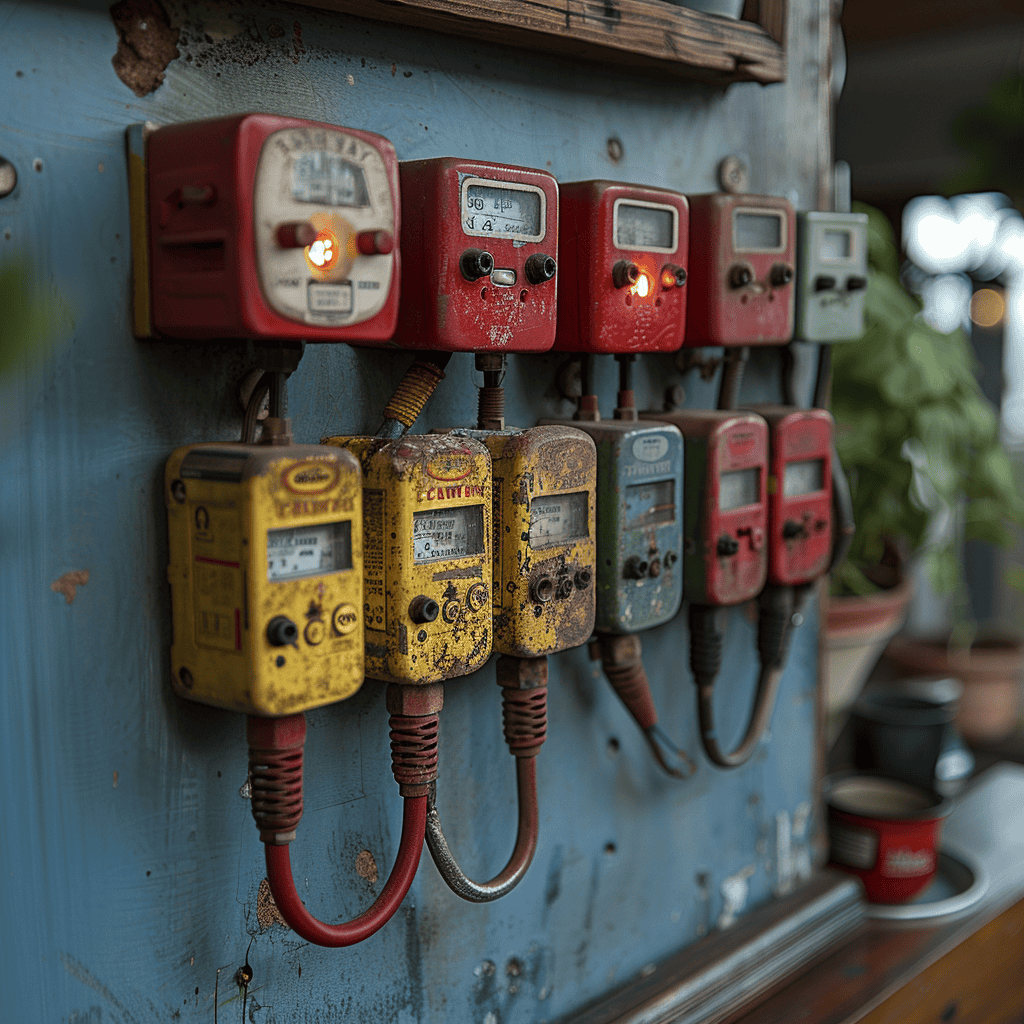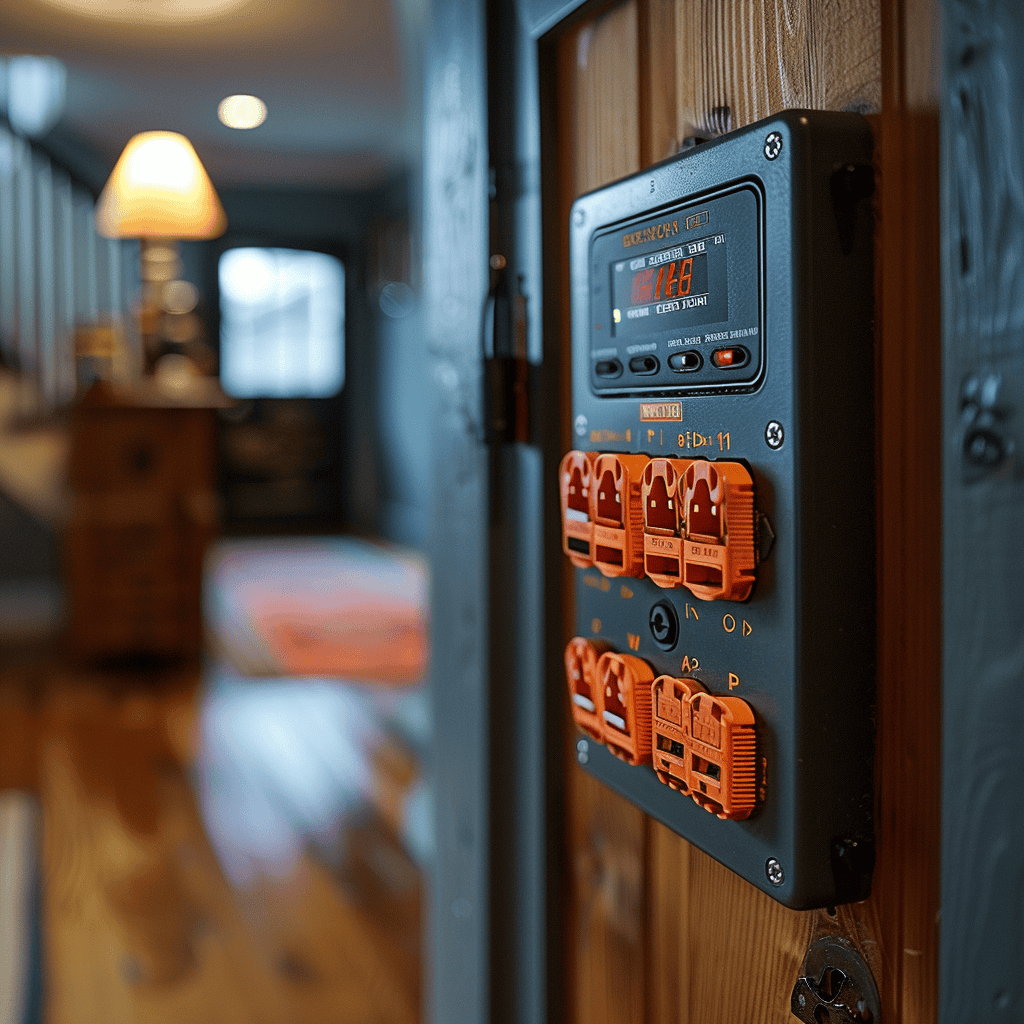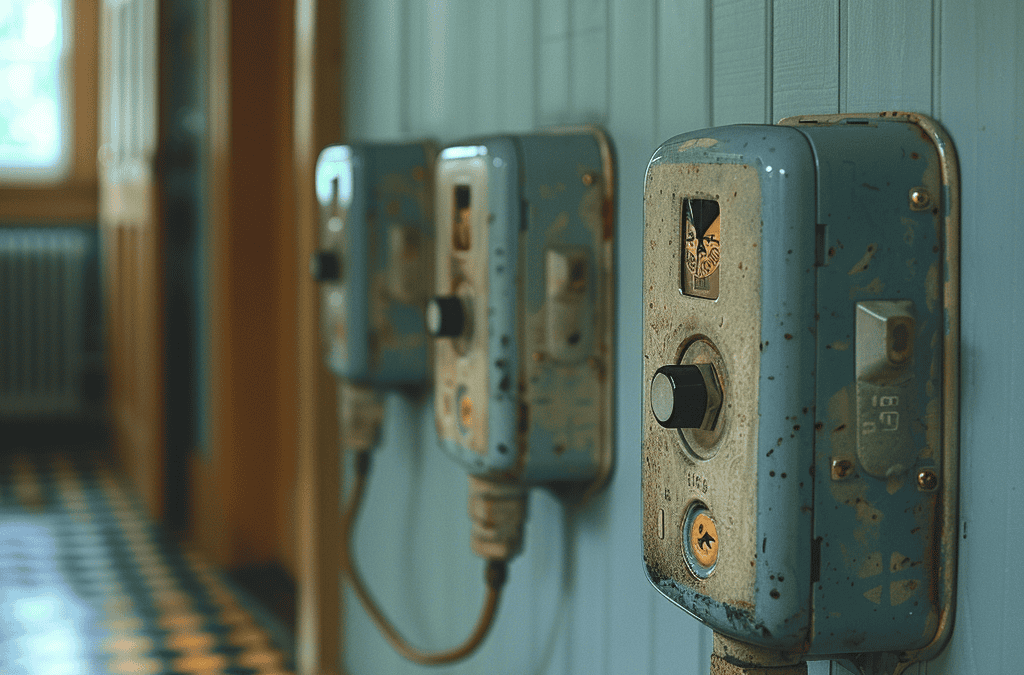Electrical safety controls are critical measures implemented to prevent accidents and hazards related to electricity. The specific electrical safety control that involves unplugging unused appliances is a passive safety measure. Unplugging appliances when they are not in use helps to eliminate the risk of electrical faults, overheating, and potential fires. To learn more about this and other electrical safety practices, please read the rest of the article.
Importance of Electrical Safety
Electrical safety is paramount in protecting people and property from the dangers associated with electrical faults. Proper safety measures help prevent fires, electrical shocks, and other hazards that can cause serious injury or damage. By implementing effective safety controls, the risk of electrical accidents can be significantly reduced.
Types of Electrical Safety Measures
There are various types of electrical safety measures, including passive and active controls. Passive measures, such as unplugging unused appliances, do not require continuous intervention and work by eliminating potential hazards. Active measures, such as using surge protectors and circuit breakers, actively monitor and respond to electrical issues to prevent harm.
Passive Safety Measures
Passive safety measures are preventive actions designed to minimize risks without requiring ongoing active intervention. These measures are essential for maintaining a safe environment by addressing potential hazards before they can cause harm.
Definition and Examples
Passive safety measures involve actions taken to prevent accidents by eliminating potential hazards. Examples include using flame-retardant materials, installing smoke detectors, and unplugging appliances that are not in use. These measures effectively reduce risks without the need for constant monitoring or intervention.

Unplugging Appliances as a Passive Safety Measure
Unplugging appliances is a simple yet effective passive safety measure. By disconnecting devices from their power source when not in use, the risk of electrical faults, short circuits, and overheating is significantly reduced. This practice helps prevent many common electrical accidents and enhances overall safety.
Benefits of Unplugging Unused Appliances
Unplugging unused appliances offers several key benefits, including reducing the risk of electrical fires, conserving energy, extending the lifespan of appliances, and preventing damage from power surges. These advantages make unplugging an important safety practice in any household or workplace.
Reducing Electrical Fire Risks
One of the primary benefits of unplugging unused appliances is the reduction of electrical fire risks. Electrical fires can start due to faults in appliances or power surges. When an appliance is unplugged, it is completely disconnected from the electrical circuit, eliminating the risk of such incidents. Statistics show that a significant percentage of household fires are caused by appliances left plugged in unnecessarily.
Conserving Energy and Reducing Bills
Many appliances consume electricity even when turned off, a phenomenon known as “phantom” or “standby” power. This continuous energy draw can add up, leading to higher electricity bills. Unplugging these devices helps conserve energy and can result in noticeable savings on utility bills.
Extending Appliance Lifespan
Regularly unplugging appliances can help prolong their lifespan. Electrical devices are susceptible to wear and tear from constant electrical exposure, including minor power surges and fluctuations. By unplugging them when not in use, you reduce this exposure and potentially extend the life of the appliances.
Preventing Damage from Power Surges
Power surges can occur due to various reasons, including lightning strikes, electrical faults, or sudden changes in power supply. These surges can damage appliances that are plugged in. By unplugging devices, you protect them from potential damage caused by such power fluctuations.
Additional Electrical Safety Practices
In addition to unplugging unused appliances, there are several other important electrical safety practices that can help create a safer environment. These practices include using GFCI outlets, conducting regular inspections and maintenance, safely using extension cords and power strips, and properly storing electrical appliances.

Using Ground Fault Circuit Interrupter (GFCI) Outlets
GFCI outlets are designed to protect against electrical shock by shutting off the power when they detect an imbalance in the electrical current. These outlets are particularly important in wet areas like kitchens and bathrooms, where the risk of electrical shock is higher.
Regular Inspection and Maintenance
Conducting regular inspections of your home’s electrical system is crucial in identifying and addressing potential issues before they become serious problems. This includes checking wiring, outlets, and appliances for signs of wear, damage, or faulty operation.
Safe Use of Extension Cords and Power Strips
Extension cords and power strips should be used judiciously to avoid overloading circuits. Overloading can cause overheating and potentially lead to fires. It is essential to use these devices according to their specifications and to avoid daisy-chaining multiple power strips together.
Proper Storage of Electrical Appliances
Proper storage of electrical appliances when they are not in use can also enhance safety. Appliances that generate heat, such as irons and space heaters, should be stored in a way that prevents accidental activation or overheating. Keeping cords organized and away from water sources is also vital.
Practical Tips for Implementing Unplugging Practices
Incorporating the practice of unplugging unused appliances into your daily routine can significantly improve electrical safety. Here are some practical tips to help you effectively implement this habit in your home or workplace.
Creating a Checklist for Unplugging
Creating a checklist for unplugging appliances can help ensure that no device is overlooked. This list should include commonly used items such as kitchen appliances, entertainment systems, and chargers. Reviewing this checklist before leaving home or going to bed can enhance safety.

Automating with Smart Outlets
Smart outlets and plugs can automate the process of unplugging appliances. These devices can be controlled via smartphone apps, allowing you to turn off power to specific outlets remotely. This technology can provide added convenience and peace of mind.
Unplugging Before Vacations or Extended Absences
Unplugging appliances before leaving for vacations or extended periods away from home is a crucial safety measure. This practice not only reduces the risk of electrical fires but also conserves energy and prevents unnecessary wear on appliances.
Educating Household Members on Electrical Safety
Educating all household members about electrical safety is essential for maintaining a safe environment. This education should include teaching children about the dangers of electricity, creating a comprehensive safety plan, and regularly discussing safety practices as a family.
Teaching Children About Electrical Safety
Educating children about the basics of electrical safety is essential. Teaching them not to insert objects into outlets, to avoid touching appliances with wet hands, and the importance of unplugging devices can help instill safe habits from a young age.
Creating a Household Electrical Safety Plan
Developing a comprehensive electrical safety plan for your household ensures that everyone knows what to do in case of an electrical emergency. This plan should include steps for shutting off power, using fire extinguishers, and contacting emergency services.
Regular Family Meetings to Discuss Safety Practices
Holding regular family meetings to discuss and review electrical safety practices can reinforce their importance. These meetings provide an opportunity to update safety protocols and ensure that all household members are aware of the latest safety measures.
Technological Advances in Electrical Safety
Advancements in technology have introduced new tools and systems that enhance electrical safety. These innovations include smart home technology, energy monitoring systems, and automated safety shutoff devices, all of which contribute to a safer living environment.
Smart Home Technology
Smart home technology has advanced significantly, providing various tools to enhance electrical safety. Devices such as smart plugs, which can be controlled remotely, and smart breakers, which monitor and manage electrical load, offer added layers of protection.
Energy Monitoring Systems
Energy monitoring systems can track the power usage of individual appliances, helping you identify which devices consume the most energy. By understanding these patterns, you can make informed decisions about when to unplug devices to save energy and reduce costs.
Automated Safety Shutoff Devices
Automated safety shutoff devices can detect unusual electrical activity and cut off power to prevent hazards. These systems can be especially useful in preventing fires and protecting sensitive electronics from damage due to power surges.
Questions and Answers for Which Electrical Safety Control Involves Unplugging Unused Appliances
Here are some questions:
Why is it important to unplug unused appliances?
Unplugging unused appliances is crucial because it helps prevent electrical fires, conserves energy, extends the lifespan of appliances, and protects devices from damage caused by power surges. Appliances left plugged in can still draw electricity, known as phantom or standby power, which can increase your electricity bills and pose a fire risk due to potential electrical faults.
How does unplugging appliances save energy?
Many electrical devices consume power even when they are turned off, due to features like standby modes and digital displays. By unplugging these devices, you eliminate this phantom power usage, leading to reduced energy consumption and lower electricity bills.
What types of appliances should I unplug when not in use?
You should unplug devices that are not essential to remain on, such as toasters, coffee makers, phone chargers, televisions, and computers. High-energy-consuming appliances and those with standby modes are prime candidates for unplugging to save energy and reduce fire risks.
Are there any appliances that should not be unplugged?
Essential appliances that should not be unplugged include refrigerators, freezers, and security systems. These devices are designed to run continuously and provide critical functions that would be disrupted if unplugged. However, most other household appliances can and should be unplugged when not in use to enhance safety and save energy.
How can I remember to unplug appliances regularly?
Creating a checklist and placing it in a visible location, such as near the main exit of your home, can help remind you to unplug appliances before leaving. Additionally, smart plugs can be used to automate the process, allowing you to control the power supply to your devices remotely via smartphone apps.
Can unplugging appliances extend their lifespan?
Yes, unplugging appliances can extend their lifespan by protecting them from power surges and reducing wear and tear caused by constant electrical exposure. Regularly disconnecting devices when not in use helps prevent damage and maintain their optimal functionality.
What is phantom power, and why should I be concerned about it?
Phantom power, also known as standby power, is the electricity consumed by devices when they are turned off but still plugged in. This hidden energy use can add up over time, leading to higher electricity bills and unnecessary energy consumption. By unplugging devices, you eliminate phantom power and reduce your overall energy footprint.
How do smart outlets help with unplugging appliances?
Smart outlets allow you to control the power supply to your appliances remotely through smartphone apps. These outlets can be programmed to turn off devices automatically at specific times or when not in use, providing convenience and enhancing safety without the need for manual unplugging.
What are the risks of not unplugging unused appliances?
Leaving unused appliances plugged in increases the risk of electrical fires due to potential faults or power surges. Additionally, it contributes to higher energy bills and can lead to premature wear and tear on the appliances. Regularly unplugging devices when they are not in use is a simple and effective way to mitigate these risks.
Conclusion
In this article, you learned which electrical safety control involves unplugging unused appliances? Unplugging unused appliances is a straightforward yet powerful method of improving electrical safety, conserving energy, and prolonging the lifespan of devices. By incorporating this practice into your daily routine, you can significantly reduce the risk of electrical hazards in your home.
Recap of the Importance of Unplugging Appliances
Unplugging unused appliances is a vital safety measure that helps reduce the risk of electrical fires, save energy, and extend the life of your appliances. This simple practice can make a significant difference in enhancing the safety and efficiency of your home.
Encouragement to Adopt Comprehensive Safety Practices
In addition to unplugging appliances, adopting a range of electrical safety practices, such as using GFCI outlets, conducting regular inspections, and educating household members, can create a safer living environment. Embracing these measures ensures a well-protected and energy-efficient home.

